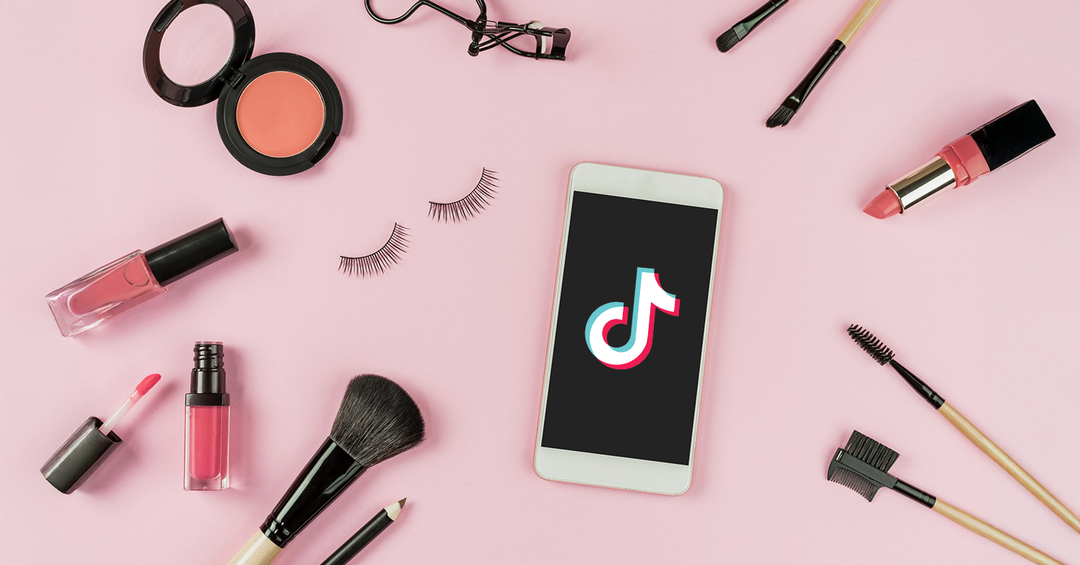Most (if not all) brands can agree, preparing for Black Friday and Cyber Monday – the two most competitive shopping days of the whole year – wasn’t exactly a piece of cake. From emails and ad campaigns to site optimizations and social media giveaways, there’s quite a bit of elbow grease that goes into whipping up a successful Cyber Week strategy (and that’s just the tip of the spatula!).
But now that Cyber Week is over, you’re probably wondering, “Was all that effort worth it?” Depending on how your brand performed, the answer may vary.
If your brand fell short of your expectations or didn’t perform as well as it had in previous years, frustratedly (and understandably) you may think all that time preparing went to waste. But don’t get discouraged, because there’s something to learn from this year’s Cyber Week findings.
You can always improve, and use this year’s data to learn exactly what went wrong, what worked, and what needs a bit of tweaking. The best way for your brand to grow is to reflect on its Cyber Wek performance, identify your weak spots, and use this information to develop a sweet strategy for 2022.
Get ready to serve up an award-winning recipe next year with the help of our team at CAKE! We’ve collected and assessed all our findings to help your brand build a Cyber Week strategy that will turn up the heat in 2022. Here is a closer look at what 2021 had in store for our clients, as well as our super sweet recommendations for next year.
Let’s Catch Up: Our Recommendations for Cyber Week 2021
In case you may have missed them, let’s catch you up on some of our projections and recommendations for this year’s holiday shopping season. Our team sifted through data from last year to help project what would perform in 2021. We used the following recommendations to help guide and develop our client’s holiday marketing strategies.
Promotional Run Times: Longer = Better
Consumer behaviors are always changing. To accommodate these changes, our team recommended clients launch their holiday campaigns and promotions earlier. We advised our clients to run these campaigns in early November (or even late October).
By extending promotional run times into this timeframe, our clients were making their customers aware of their special offers and holiday deals early on. This served to spread awareness about their cyber sales in advance, giving customers plenty of notice (while also putting these brands ahead of their competitors).
Our team also suggested that brands run their holiday promotions for longer than and even before Cyber Weekend. By launching promotions earlier, our clients would be able to compete with “big box stores” that offer deals and discounts in the days and weeks leading up to Black Friday and Cyber Monday.
Discount Your Discounts!
When it comes to deals, what may seem like “too much” isn’t nearly competitive enough. For brands to be competitive in their marketplace, especially during Cyber Week, we recommended that our clients offer even better discounts than year’s prior.
Because competition is ever-increasing, brands need to offer deals that are better than those of their competitors. You have to give customers a reason to choose you! Taking this into account, we advised our clients to offer shoppers deals of more than 30% off.
To prove just how crucial this was, we surveyed our very own team here at CAKE. An internal forum revealed that most members of our team were not enticed by a Cyber Week sale unless it was 30% off or more. In fact, our team reported that this year’s holiday discounts were the most disappointing of any they’d seen in the last five years. These reflections were enough for us to determine that the deeper the deal, the better you’ll perform.
Lead Generation
Our team agreed that one thing we could not overlook was lead gen. So, to get a head start on targeting holiday interests and collecting first-party data before the peak periods, we advised that our clients launch their lead gen efforts (with seasonally inspired messages) in September. Spreading awareness about holiday sales well in advance offers brands a strategic advantage. Not only will this grab the attention of shoppers early on and get them excited for these sales, but it also gives brands a competitive advantage.
Budget for Advertising Costs
To account for a spike in in-platform costs, our team recommended that brands increase their holiday budget by 30%.
On-Site and Organic Efforts
To make sure we covered all our bases, our team offered our clients a few other recommendations to account for on-site and organic strategies. These suggestions included:
- Use auto-prices in add to cart or within product list pages – as opposed to requiring a shopper to apply their special promo code at checkout.
- Feature a countdown banner within their site pages to make shoppers aware of the sale’s end date and time.
- Implement organic strategies in the days (or weeks) before a promo. We encourage using both Instagram and Facebook stories to feature countdowns and fun, festive sale teasers to create excitement and anticipation among users.
- Boost emails throughout peak periods to ping abandoned cart users, customers who have previously made a purchase, and any last-minute holiday shoppers.
Did We Overbake Our Strategy? Or Was It Just Right?
Now that we’ve got you up to speed on our recommendations, we’re going to show you just how well our clients performed. And the icing on the cake…Help yourself to some of the hottest trends from 2021’s holiday shopping season.
Christmas (Shopping) Came Early This Year
Planning and getting it done was – evidently – the motto of holiday shoppers this season. This year, it seems consumers have abandoned last-minute holiday shopping altogether, as consumers were making their purchases earlier than ever before.
Due to this shift in consumer behavior, Cyber Weekend saw a significant dip in revenue from holiday sales (down 20% from last year). In 2020, Cyber Weekend accounted for 29% of November’s revenue, whereas, this year, this dropped to 23%.
When examining our client’s performance, we saw the following:
- Online revenue from November 1st-15th in 2021 vs. 2020: Up 22%
- Online revenue from November 16th-30th in 2021 vs. 2020: Down 9%
The data from this year reflects that most shoppers were – despite the Cyber Week sales – purchasing their holiday gifts in early November. We suspect this shift in consumer behavior occurred in response to brands launching their holiday promos earlier and for a longer period.
These findings also reflect that clients who ran their promos in early November experienced much greater year-over-year (YoY) growth. For example:
- Client X launched their holiday promo three days earlier this year than last year. As a result, they experienced a 115% growth in their Cyber Weekend revenue.
- Client Y, however, shortened the run time of their holiday promo from five days to two days this year. As a result, they experienced a 30% decrease in Cyber Weekend revenue.
External projections support these findings, as a survey from Insider Intelligence reported that 31% of respondents said they would start their 2021 holiday shopping season before the end of October.
Advertising Costs Continue to Rise
As expected, our findings from Cyber Week reflect that advertising costs continue to experience a surge. Data suggests that both cost per click (CPC) on Google Search increased by 45% and cost per thousand (CPM) on paid social saw an increase of 30%.
Brands should take note of these rising advertising costs. When it comes to budgeting for holiday promotions, we will continue to advise our clients to account for these costs in their seasonal budgets. For clients that did expand their budgets during this season’s peak periods, these brands were even more competitive. However, clients that did not account for these costs – or reduced their budgets – were not able to drive as much traffic to their site. Refer to the following example from our client’s performance:
- Client X expanded their budget by 162% YoY, and their site experienced an increase in traffic volume of 63% increase.
- Client Y reduced their budget by 43% YoY, and their site’s traffic volume decreased by 30%.
Diversifying Channels
Brands that chose to diversify their channels leading up to Cyber Week performed exceptionally well. Many of CAKE’s clients extended their channels beyond Facebook and Google Search. Those that launched holiday promotions across 3+ paid advertising platforms saw YoY growth during both Q4 and the peak holiday season.
When it came to programmatic efforts, our clients experienced an increase in sitewide revenue growth of 92% YoY. To achieve long-term growth and exceptional performance, our team is encouraging brands to launch programmatic ads during the holiday sale season and peak sale days (Black Friday and Cyber Monday).
For clients who reduced their efforts across different channels, these brands underwent significant drops in YoY performance, averaging a decrease of 31% YoY.
Lead Gen Tactics
As expected, email remained an essential channel to 2021’s holiday shopping and sale season. Since 2020, email saw an increase of up to 10% in YoY growth for our clients.
Full Funnel Efforts and Paid Social
In 2021, digital marketing efforts and performance were affected by a series of changes, including the iOS14 update. As a result, the paid social advertising channel also experienced a shift.
CAKE supported our clients and helped them to navigate these changes by developing strategies that used social media to target buyers in the awareness and consideration stages. These tactics move away from the traditional “old model” of directly driving conversions.
In response to these changes, our client’s paid social YoY revenue grew by 210%. These brands also experienced an increase of 214% in unique site users alongside a 172% growth of on-site conversion rates.
Payment Ease
This holiday season, CAKE clients also felt a significant shift in how consumers engaged with the checkout process. Adobe Analytics reported that “Buy Now, Pay Later” purchases experienced 422% growth and the volume of orders for the month of November grew by 438% from 2019. From these findings, our team can determine that payment options like Klarna and Afterpay are becoming imperative to conversion rates.
Throughout Cyber Week, shoppers were also more actively using auto-applying savings instead of discount codes. During 2020, our client data reflected that 50% of all online purchases were made with a discount code. However, in 2021, this number decreased to 20% of purchases made with a discount code. This reflects a significant change in consumer behavior concerning the use of a discount code at checkout. From these results, our team inferred that consumers now prefer other methods of applying discounts.
CAKE’s Recommendations for 2022
From these findings, our team at CAKE is now pushing the importance of investing in year-round brand development for optimal performance. While brands often lean to paid search for quick results and returns, our team cannot emphasize enough how critical it now is to invest in long-term growth strategies, such as:
- Top-of-funnel paid social efforts
- Organic social media
- Influencer marketing – To account for growing iOS14 data loss and consumers' appetite for authentic content, influencer marketing is now a must. As proof, Client X published an influencer post that drove 12% of their Q4 traffic in just 24 hours. Since that post went live, Client X’s sales grew by 34%.
- Programmatic efforts for top-of-funnel and retargeting
- Paid email lead gen
- Search engine optimization (SEO) to establish a long-term search presence
All You Knead Is CAKE!
Ready to make 2022 your best year yet? Investing in building your brand is as easy as pie with the support of a full-service, eCommerce marketing agency like CakeCommerce! Our skilled team is prepared to help you achieve all your holiday sale goals and perform above and beyond your expectations. To learn more about our services, contact the team at CAKE!






